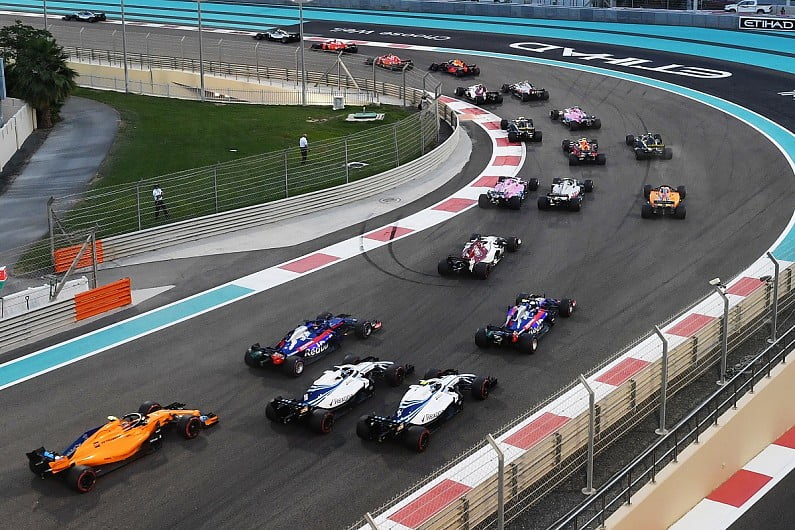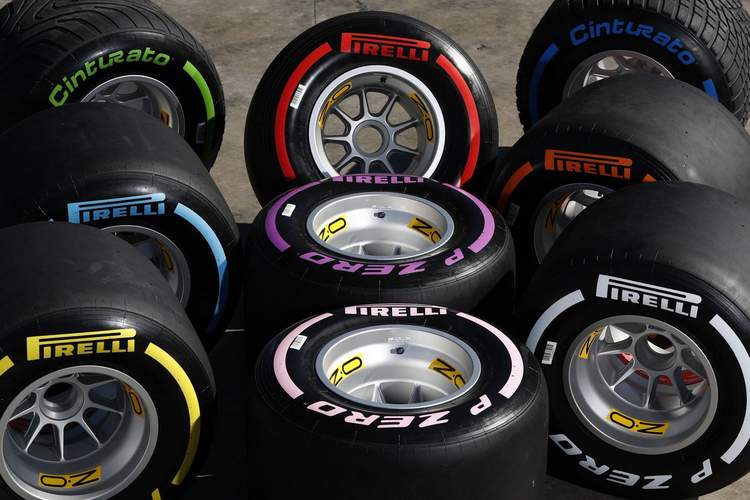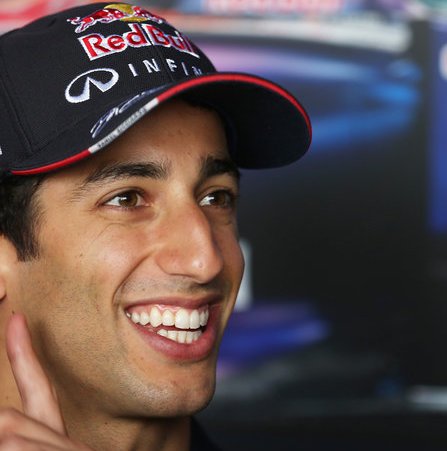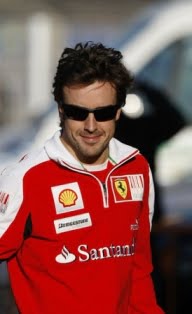‘Same same but different’ is the best summary to explain the F1 2019 changes for the upcoming season. At the offset, the cars look almost the same as last year, but there are significant bodywork changes. Likewise, for the drivers; their race-wear and attire will look the same, but there are changes there too.
Technical changes aside, there are sporting and other operational changes that will impact your favourite team’s planning and performance and above all else, how you experience the sport of Formula One.
Aerodynamics and Other Bodywork
The most high-profile change for the season ahead is how the cars will perform aerodynamically. For long, a Formula One car’s aerodynamic capabilities have been both, a boon and a bane. Formula One has admitted that they wish for the series’ cars to be the fastest in the world of motorsport and this can’t be achieved without the support of aerodynamics. However, it is the excessive use of aerodynamics that has led to a situation where there is a lack of wheel-to-wheel action and hence, overtaking.
For F1 2019, the front wings have been made wider, higher and simpler – especially with the complex-designed and expensive looking end-plates. There have been further changes to the design of the rear wing – to enable more rear-end downforce and grip, while also narrowing the barge-boards on the side of the car. Brake ducts too have a new ruling, one that will force teams to use brake ducts for the purpose they are primarily there for – cooling. Like our road cars, a Formula One car’s rear wing will feature additional lights – as a part of a measure to increase visibility and for the fans, some cosmetic appeal too.
2019: Important For Sport and Business Of F1
Furthermore, ‘blown axles’ have been banned – all these changes are made with the intention to smoothen the airflow by reducing the ‘dirty air’ created by a Formula One car. Also, the (wretched) DRS is expected to be up to 25 per cent more powerful than last season. If the changes work, the new aero rules will permit cars to follow each other more closely without incurring a penalty – like excessive tyre usage due to lack of aerodynamic grip. Let’s hope that the final result enables more wheel-to-wheel action without making overtaking a bit too easy for the drivers.
The pre-season testing has indicated the different aerodynamic philosophies followed by Ferrari and Mercedes – basically, their front-wing concepts are diverse. Mercedes has already claimed that switching to a Ferrari-style wing could take months and that they would rather stick to their aero-philosophy and develop it further. Let’s see which team’s philosophy turns out to be more agile and adaptable as the season progresses.
Tyres
In an effort to please drivers and fans, Pirelli has made changes to their tyres for the F1 2019 season – compound and colour-wise. The drivers will be pleased that Pirelli has revisited the compound construction for this season to avoid the blistering problems that were faced last season.
Hopefully, tyre management is a thing of the past and drivers are able to push throughout the race. For the fans, Pirelli has tried to simplify their tyre allocations for each race. Previously, fans were tasked with remembering the several tyre compounds and their unique colours, but for F1 2019, Pirelli has introduced three colours to signify the compound in use – red (softest), yellow (medium) and white (hardest).
As simple as the new colour coding may sound, that Pirelli will use any of the five compounds (that they have homologated for this season, also labelled from C1 to C5) as the red-yellow-white compounds this year is where the confusion begins. For ardent fans, knowing the actual compound (and not colour) that their favourite driver/team is more comfortable setting their fastest laps on is more important. So expect tyre talk to be confusing this season.
Math: Mick Could Race For Ferrari By 2024
Interestingly, Pirelli claims to have widened the lap time deficit between each of the compounds allowing teams a variety of tyre strategy through the race. Also, the intermediate and wet compounds have been completely changed for F1 2019 to allow drivers better driveability across different conditions. And more importantly, the intermediate compound will have a more effective crossover between the slicks and wet tyres – so look out for the braver drivers attempting to make the most of the changing weather conditions on-track.
Pirelli has also decided to change the tyre temperature maintained by the tyre blankets. While the fronts will remain at 100 degrees Celsius, the rear temperature has been lowered to 80 degrees Celsius. Haas F1 Team driver Romain Grosjean has already blamed a spin from his pre-season test to this lowered temperature. Will the other drivers join him too?
No More Party Mode
The infamous ‘party mode’ that helped Ferrari and Mercedes an extra boost of power during qualifying (especially Q3) may no longer be available to the teams from F1 2019. The FIA has ruled that the auxiliary oil tank be empty during qualifying, limiting the ‘oil burn’ tactics that allowed for this party mode. So much for Red Bull Racing celebrating the possibility of a ‘party mode’ for their cars after their switch to Honda engines. Will the elimination of ‘party mode’ bring more drivers to the qualifying party by reducing the gap between Ferrari, Mercedes and the rest?
Safety Car Rules
From F1 2019, drivers will be permitted to overtake only after crossing the start-finish line and not the ‘first Safety Car line’ which was often situated before the start-finish line.
This is the ONE rule that Formula 1 drivers would be happiest about – the ruling that separates the driver’s weight from the car. For several seasons now, the total weight of the car included the driver’s weight – so shorter drivers were at an advantage. Also, this meant that drivers often had to remain lean, leading to several drivers complaining about the stresses they went through to remain fit while not gaining muscle and hence weight.
Who Can Challenge Lewis Hamilton In 2019?
From 2019, 80kgs is the minimum driver weight permitted. This means that drivers are able to eat healthier – the current World Champion Lewis Hamilton claiming that he added 5kgs through the winter period. For drivers under the weight of 80kgs, they will be required to use a ballast in their cockpit to avoid any weight advantages.
Given the FIA’s constant push towards making the sport safer, a new standard for helmets has been introduced from 2019. This standard has been developed with learnings from Felipe Massa’s near-fatal crash in 2009 and will protect the driver far more from flying debris or similar elements while racing. Also, your favourite driver will also be mandated to wear biometric gloves from this season. The sensors will be used for medical purposes in the event of a crash, but in the future, one could expect Formula 1 to use the data for television broadcast too.
Grid Penalties Getting More Sensible
Formula One’s grid penalties were made a laughing stock by the entry of Honda in the sport. In the Mclaren-Honda era, grid penalties ran into hundreds of places – all of which were meaningless given that the lowest possible starting slot would be 20th. From 2018, a grid penalty of more than 15 grid slots meant that the driver automatically started from the back of the grid. This was a clear step towards eliminating the farcical and comical grid penalty rule of the past.
However, in the event that multiple drivers suffered from a grid penalty, the driver that left the pit-lane first on Friday’s Free Practice 1 would effectively start ahead of the other penalised drivers meant that there was a traffic jam at the end of the pit-lane on Friday morning.
From 2019, the starting order of the penalised driver would also be decided by their qualifying order – prompting proper participation from all drivers, penalised or not. Furthermore, any driver who failed to qualify for the race (outside of 107 per cent) would start after all such drivers with grid penalties.
Self-scrutineering
From 2019, Formula One teams will end up self-scrutineering their cars and be required to submit a declaration to the FIA confirming that their cars fully comply with the regulations. Such a declaration would need to be submitted 18 hours before Free Practice 1, failing which the said team would not be allowed to compete. And of course, the FIA would still conduct their regular checks through and after the sessions – meaning that teams wouldn’t be able to misuse this rule to gain a performance advantage.
Trainee Staff
We have seen limited testing impact the amount of track time young drivers would have in their development. Similarly, the limit on the number of staff permitted to travel to a Grand Prix weekend (only 60 team personnel) has seen Formula 1 teams unable to train younger staff at actual races.
From 2019, teams will be allowed an exception of six younger team personnel to travel to the races for training. However, team trainee team member would be permitted to attend only two Grands Prix in the season. Teams aside, Formula 1 needed to enable this ruling in case they increased the number of races on the calendar to 25 – a possibility in the near future.
Chequered Light
Fans have grown up to the iconic chequered flag being waved to depict the end of a race. However, thanks to an early waving of the chequered flag (by a full lap!) at last year’s Canadian Grand Prix, the FIA will now use the chequered light (basically, a digital chequered flag which has been in use for a few seasons) to signal the end of a race from this season.
Please Don’t Take Away Our Chequered Flag
The intention is to eliminate any human error that could end the race prematurely. However, it isn’t certain whether the chequered light will be triggered by a human or be automated to count the number of laps. For traditional Motorsport fans, the chequered flag will still be in use, however, it is the chequered light that will be the official signal.
Extra Point For Fastest Lap
From 2019, drivers who finish in the top-10 will be awarded an extra point if they register the fastest lap of the race. The FIA has introduced this rule with the hope that the extra point will trigger some late-in-the-race strategy from teams and drivers and hence some excitement. This means that there are 21 extra points up for grabs in this year’s championships – nearly what a driver would earn for winning a race.
Typically, this last-minute rule change has evoked negative reactions from a large number of fans. Funnily enough, the objecting fans actually don’t know what to expect, since this rule last existed in the late-50s and was abolished back then for altogether different reasons. In our view, 21 points is a significant haul and championships in the history of Formula One have been won or lost by lesser margins. If at all, we would have hoped that this extra point was available for every driver on the grid and not just the top-10.
All-in-all, F1 2019 changes are some of the most well-researched and thought-through in the history of the sport. Let’s see how they impact your Formula One experience.
This post was first published on Firstpost














